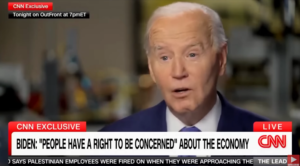
Ever since President Joe Biden’s inauguration in January 2021, his administration has actively dismantled many immigration restrictions imposed during the Trump era. These strategic steps include plans to increase refugee admissions, safeguard relief from deportation for undocumented immigrants who arrived in the U.S. as children, and non-enforcement of the “public charge” rule, which previously denied green cards to immigrants using public benefits like Medicaid.
During the early days of the coronavirus pandemic, Biden also reversed restrictions that significantly reduced the issuance of immigrant visas. The number of individuals receiving green cards dropped from around 240,000 in the second quarter of the 2020 fiscal year to about 79,000 in the third quarter. In contrast, during the third quarter of fiscal 2019, nearly 266,000 individuals obtained green cards.
Biden’s most extensive immigration proposal to date aims to open the doors to more new immigrants in the U.S. while providing millions of undocumented immigrants already residing in the country a pathway to legal status. This comprehensive legislation introduces an eight-year route to citizenship for an estimated 10.5 million undocumented immigrants, modernizes the existing family-based immigration system, revises employment-based visa regulations, and increases the number of diversity visas. In stark contrast, President Donald Trump’s administration had sought to limit legal immigration through various measures, including legislative changes designed to significantly curtail family-based immigration.
Current Legislative Landscape
Presently, the Senate is deliberating several immigration provisions within the spending bill, the Build Back Better Act, passed by the House in November 2021. While the bill’s passage remains uncertain, as does the inclusion of immigration reforms in the final version, the legislation, if enacted, would make approximately 7 million undocumented immigrants eligible to apply for protection from deportation, work permits, and driver’s licenses.
In light of a record number of encounters at the U.S.-Mexico border, President Biden reinstated a Trump-era policy in December 2021. This policy necessitates that individuals arriving at the U.S.-Mexico border seeking asylum must await processing in Mexico. The Migration Protection Protocols, or “Remain in Mexico” policy, which Biden had previously ended, was reinstated following a U.S. Supreme Court ruling in response to a lawsuit by Texas and Missouri. Asylum seekers do not attain legal status permitting them to live and work in the U.S. until their claims are approved.
Overview of U.S. Immigration Programs
Overall, the U.S. is home to more than 35 million legal immigrants, with the majority being American citizens. Many reside and work in the country after receiving lawful permanent residence, while others hold temporary visas, mainly issued to students and workers. Additionally, approximately 1 million undocumented immigrants have temporary authorization to live and work in the U.S. through programs such as Deferred Action for Childhood Arrivals (DACA) and Temporary Protected Status (TPS).
Key Insights into Existing U.S. Immigration Programs and President Biden’s Proposed Reforms
Family-Based Immigration:

In fiscal year 2019, nearly 710,000 individuals received lawful permanent residence in the U.S. through family sponsorship. This program allows individuals to obtain green cards if they have a spouse, child, sibling, or parent residing in the U.S. with U.S. citizenship or a green card. Immigrants from countries with high applicant numbers often face years-long waits for green cards, as no single country can account for more than 7% of all green cards issued annually.
Biden’s proposal is designed to expand access to family-based green cards by increasing per-country quotas and reducing application backlogs. Family-based immigration, sometimes referred to as “chain migration,” has been the primary means by which people secure green cards in recent years, accounting for about two-thirds of the annual issuance of over 1 million green cards.
Refugee Admissions:
In fiscal year 2021, the U.S. admitted only 11,411 refugees, marking the lowest number since the passage of the 1980 Refugee Act. Despite an initial increase in the maximum number of refugees that the U.S. could admit to 62,500 in fiscal 2021, the actual admissions remained remarkably low. President Biden has raised the refugee cap to 125,000 for fiscal year 2022, commencing on October 1, 2021.
The decrease in refugee admissions is attributed in part to the ongoing pandemic. In fiscal year 2020, the U.S. admitted just around 12,000 refugees after suspending admissions during the COVID-19 outbreak. This was a significant drop from nearly 54,000 in fiscal year 2017 and well below the nearly 85,000 refugees admitted in fiscal year 2016, the last full fiscal year of the Obama administration.
Employment-Based Green Cards:
In fiscal year 2019, the U.S. government granted over 139,000 employment-based green cards to foreign workers and their families. The proposed legislation from the Biden administration holds the potential to increase the number of employment-based green cards. These are currently capped at about 140,000 per year. The legislation proposes utilizing unused visa slots from previous years and allowing spouses and children of employment-based visa holders to receive green cards without counting against the annual cap. These measures aim to reduce the substantial backlog of applicants. Additionally, the proposed legislation seeks to eliminate the per-country cap, which currently restricts immigrants from any single country to account for no more than 7% of green cards issued each year.
Diversity Visas:
The U.S. diversity visa program, often referred to as the visa lottery, grants green cards to approximately 50,000 people each year. Since its inception in 1995, the program has enabled over 1 million immigrants to acquire green cards, with the goal of diversifying the U.S. immigrant population by granting visas to underrepresented nations. Individuals from countries with high numbers of legal immigrant arrivals, such as Mexico, Canada, China, and India, are not eligible to participate in the lottery.
President Biden’s administration has proposed legislation to raise the annual total to 80,000 diversity visas, a move that contrasts with Trump’s efforts to eliminate the program.
H-1B Visas:
In fiscal year 2019, more than 188,000 high-skilled foreign workers received H-1B visas, which accounted for 22% of all temporary employment visas issued in that year. While this figure is second only to the H-2A visas for agricultural workers, which accounted for nearly a quarter (24%) of temporary visas, a substantial number of H-1B visas, totaling close to 2 million, were issued from fiscal years 2007 to 2019.
The Biden administration is expected to review policies that led to higher denial rates of H-1B visa applications under the Trump administration. Additionally, President Biden has delayed the implementation of a rule, put in place by his predecessor, aimed at prioritizing the H-1B visa selection process based on wages, which would have increased the wages of H-1B recipients overall. In a contrasting approach, the Biden administration has also proposed legislation to offer permanent work permits to spouses of H-1B visa holders. These measures contrast with the Trump administration’s efforts to restrict such permits.







